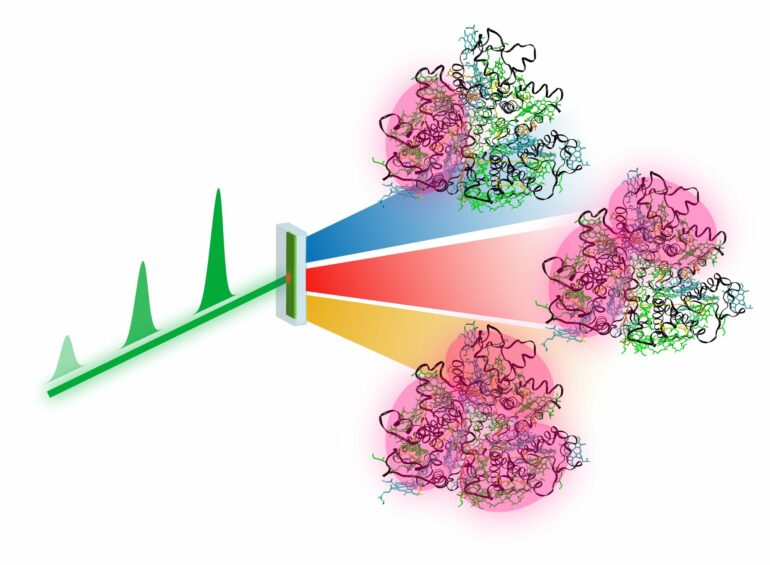The construction of the first laser in 1960 ushered in commercial applications with light that have become an integral part of our everyday lives. At the same time, this development opened up the scientific field of laser spectroscopy—a technique that is central to the analysis of materials and the study of fundamental physical phenomena.
Despite all the successes, however, research teams have struggled since the 1970s with the problem that a laser shining on a sample can excite it not just once, but several times per experiment. In this case, the measurement results of the single excitation and the multiple excitations overlap and usually cannot be separated, making it difficult to understand the material.
To remedy this, the laser power is usually reduced to such an extent that multiple excitations are less likely than single excitations. However, they cannot be completely avoided and can therefore lead to erroneous interpretations of the data. Even when multiple excitations are themselves the subject of investigation, it is still difficult to distinguish between two, three, four, or even more excitations.
A complex problem with a simple solution
A team of physicists and physical chemists from the Julius-Maximilians-Universität Würzburg (JMU) and the University of Ottawa (Canada) has now solved this decades-old problem. They present their method in the current issue of the journal Nature. In the experiment conducted in the group of Würzburg professor Tobias Brixner, the researchers used the common method of “transient absorption” to track very fast changes in various materials that occur in a millionth of a millionth of a second.
While the standard method uses a single laser power, the researchers used several different powers and combined the data according to a newly derived formula. In this way, they were able to systematically separate the effects from single to six-fold excitation.
“Not so long ago, I wouldn’t have thought that such a distinction was even possible,” Brixner says, “especially with such a simple procedure that any spectroscopic research group can implement and use without much additional effort.”
However, deriving the “recipe” was anything but simple and required in-depth analysis. Theorist and collaborator Professor Jacob Krich of the University of Ottawa explains, “The interaction of light and matter is so rich, and we’ve demonstrated a beautiful structure hiding inside it. The fact that this method works for virtually any sample you want to study really surprised all of us.”
Applications from photosynthesis to materials science
The new method has a wide range of potential applications. First author Pavel Malý, who was a postdoctoral fellow with Brixner at the time of the study and is now a researcher at Charles University in Prague, explains, “Separation of signals from single and multiple excitations is particularly useful for large systems with densely packed light absorbers, such as natural photosynthetic complexes or organic materials.”
In the future, the authors plan to extend the method to elucidate, for example, energy transport in novel photovoltaic materials.
More information:
Pavel Malý et al, Separating single- from multi-particle dynamics in nonlinear spectroscopy, Nature (2023). DOI: 10.1038/s41586-023-05846-7
Provided by
Julius-Maximilians-Universität Würzburg
Citation:
Solving the problem of distinguishing between single and multiple light excitations in laser spectroscopy (2023, March 28)


